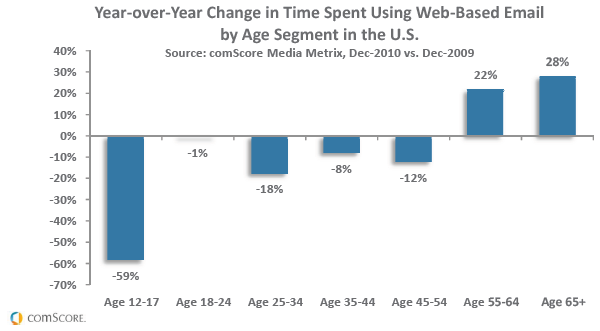Research by Ed Wolf – July 2011
Primary Objectives
I was charged with a project to research how employees collaborate on a day-to-day basis at a Fortune 500 company. The primary goal of this initiative was to:
- Gain an understanding of how work is being completed across the company.
- Identify what collaboration tools are being utilized, and their associated costs.
- Identify opportunities for IT to improve the company’s collaboration efforts.
Research
Gartner
Figure 1- Collaboration tools at work: Gartner (July 2010)
Gartner research shows that email is still a dominate way for people to collaborate at work. This is corroborated by our research as well. Gartner’s research also notes that collaboration initiatives fail because IT leaders hold mistaken assumptions about basic issues. They go on to encourage that IT leaders determine which of five factors – technology, roles, process, metrics and workplace climate – to change to achieve successful collaboration on projects.
These are five collaboration myths Gartner identified:
- The right tools will make a company collaborative
- Collaboration is inherently a good thing
- Collaborating takes extra time
- People naturally will/will not collaborate
- People instinctively know how to collaborate
Being conscious of these myths is necessary to build stronger collaboration throughout your company. It is recommended that IT leaders become real ‘change agents’ to help foster enduring organizational transformation, and streamline practices around organization and customer value. As a result, this will ultimately build and maintain a collaborative work environment.
All Collaboration
Over 450 respondents participated in a survey conducted by All Collaboration in January and February 2010. Respondents came from all levels within organizations, all functional areas, a wide range of organization sizes, a wide range of industries with some concentration in consulting, and different regions although mostly North Americans. While there are some differences in emphasis, the general findings and conclusions are consistent across most of these groups. Below are some of the key findings unearthed by their study. Essentially, this research shows that three main messages emerged from their responses:
- Complex collaboration is already a significant work activity for many people, and will only grow in importance.
- Successful collaboration requires mostly the good principles of project management applied to disperse teams.
- Keep it simple on the collaboration tools.
In additional, the results of this survey parallel and confirm the validity of the collaboration survey we sent to employees.
Figure 2 – Most people use Email and conference calls to collaborate on projects.
Figure 3 – Organization culture and improved processes make collaboration more effective.
Figure 4 – The most effective tools for collaborating are email, web conferencing and file sharing.
Enterprise 2.0 Conference
I attended the Enterprise 2.0 conference in 2011 to gain a new perspective on the evolving workplace. By attending multiple sessions and interacting with individuals from a diverse set of companies, I identified some noteworthy trends taking place in the collaborative workplace (aka Enterprise 2.0).
One interesting point learned was that Gartner predicts that by 2014, social networking services will replace e-mail as the primary vehicle for interpersonal communications for 20% percent of business users. Figure 5 shows research conducted by comScore Media that indicates email is in fact on the decline with younger individuals. Ultimately this means future employees will need tools beyond email in order to collaborate effectively.
Figure 5 – Email on the decline with younger individuals
Recently there has been a lot of talk about Google Apps and SharePoint, and whether or not companies should implement such solutions. A Nemertes research study shows that for companies considering Google Apps:
- Nearly half (49.5%) of participants are evaluating, using, or planning to deploy in 2010 office-as-a service applications. Drivers are primarily cost reduction and secondarily scalability.
- More than half (50.2%) of organizations have significant concerns about Google as a SaaS provider, with concerns including “don’t trust” and “not ready for enterprise”.
- Concerns with Google are highest among companies with global organizations and those with conservative/moderate IT cultures.
Likewise, according to their Intranet 2.0 Global Survey, for the companies considering SharePoint:
- 55% of organizations have implemented or are considering implementing SharePoint
- 46% of those companies using social media on the intranet are using SharePoint
- Only 47% of organizations have a defined governance model
- 70% use at the department level; only 38% use it at the enterprise level
Overall for both these collaboration tools, it is recommended that you first identify what business problem you are trying to resolve before selecting a product. Both have their benefits and disadvantages, but the key question you need to ask yourself is “What problem are we trying to solve?”
Figure 6 – Comparison of ladder and lattice career paths.
In addition to selecting effective collaboration tools, it is important to note that the structure of the workplace is beginning to shift. Figure 6 shows that the traditional paradigm of, “climbing the corporate ladder,” is eroding. As such companies should encourage employees to explore opportunities in different capacities. This allows them to build their relationships with different teams, learn new skill sets, and therefore become a more effective collaborator.
Figure 7 – Traditional Vs. Enterprise 2.0 communications
Lastly, effective communication amongst employees is the key to building collaboration. Figure 7 shows how traditional communication takes place; this is the model that most big companies utilize. In an Enterprise 2.0 environment, collaboration and communication becomes more ‘social’. Information is shared between organization silos, which engage employees on a more personal level.






